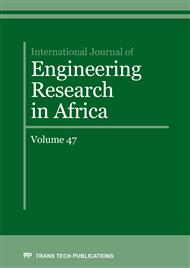p.69
p.77
p.85
p.103
p.109
p.119
p.127
p.133
p.139
Transportation Factors in the Selected Methods of Sustainable Development Assessment Tools
Abstract:
The interests focus on the tools, used in the case of evaluating the sustainability in the mobility structures. In the present is sustainable development regular part of planning in every scale. According to growing development and innovations, it was necessary to ensure a sustainable framework of progress or traffic performance. Sustainable development goals were founded as a reaction to limited natural sources and also as a response to the human impact on nature. Evolution of those goals started with the environmental base and then had also been added social and economic aspects. A study wants to find sophisticated tools for the evaluation of sustainable development in urban structures. As was located, in Europe exist methods for assessment of sustainability (EIA, SEA, LCA, EF, ER, GP, CBA, CEA, MCDA, EA, SIA, SEIA, etc.). Although even their large amount, they are mostly based on just one section of SD. Other tools which are used, are methods for evaluation sustainability (BREEAM, CASBEE-UD, GBI, LEED, IGBC, SB tool, DGNB, etc.), where are also included other sections (environmental, economic, social). Assessment tools were described and preliminary compared in the context of the factors’ coverage.
Info:
Periodical:
Pages:
139-146
Citation:
Online since:
March 2020
Authors:
Price:
Сopyright:
© 2020 Trans Tech Publications Ltd. All Rights Reserved
Share:
Citation:



